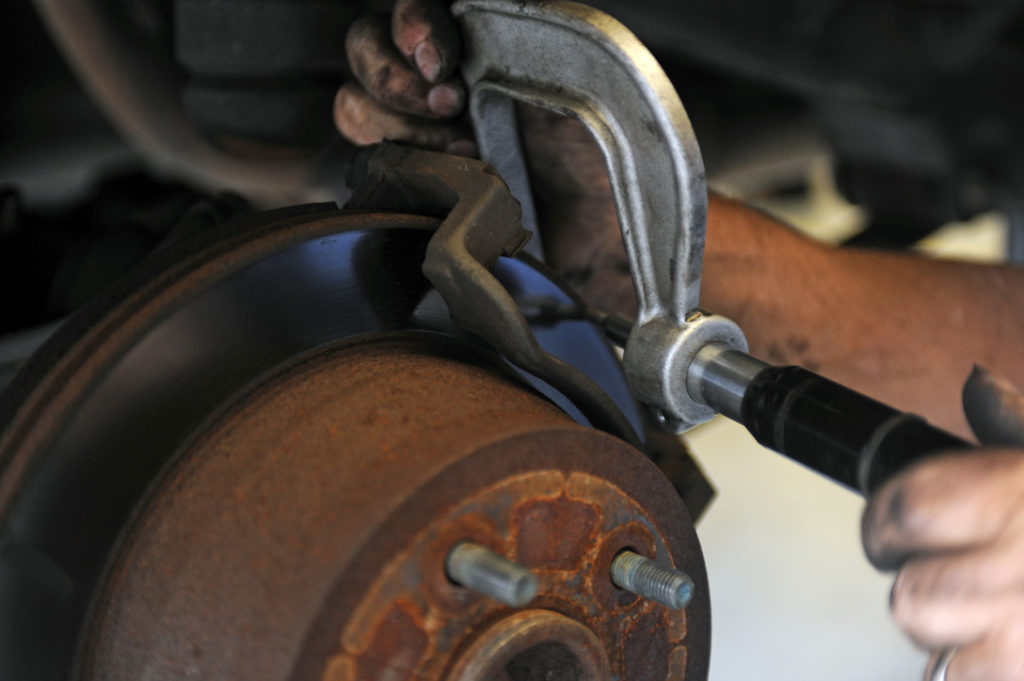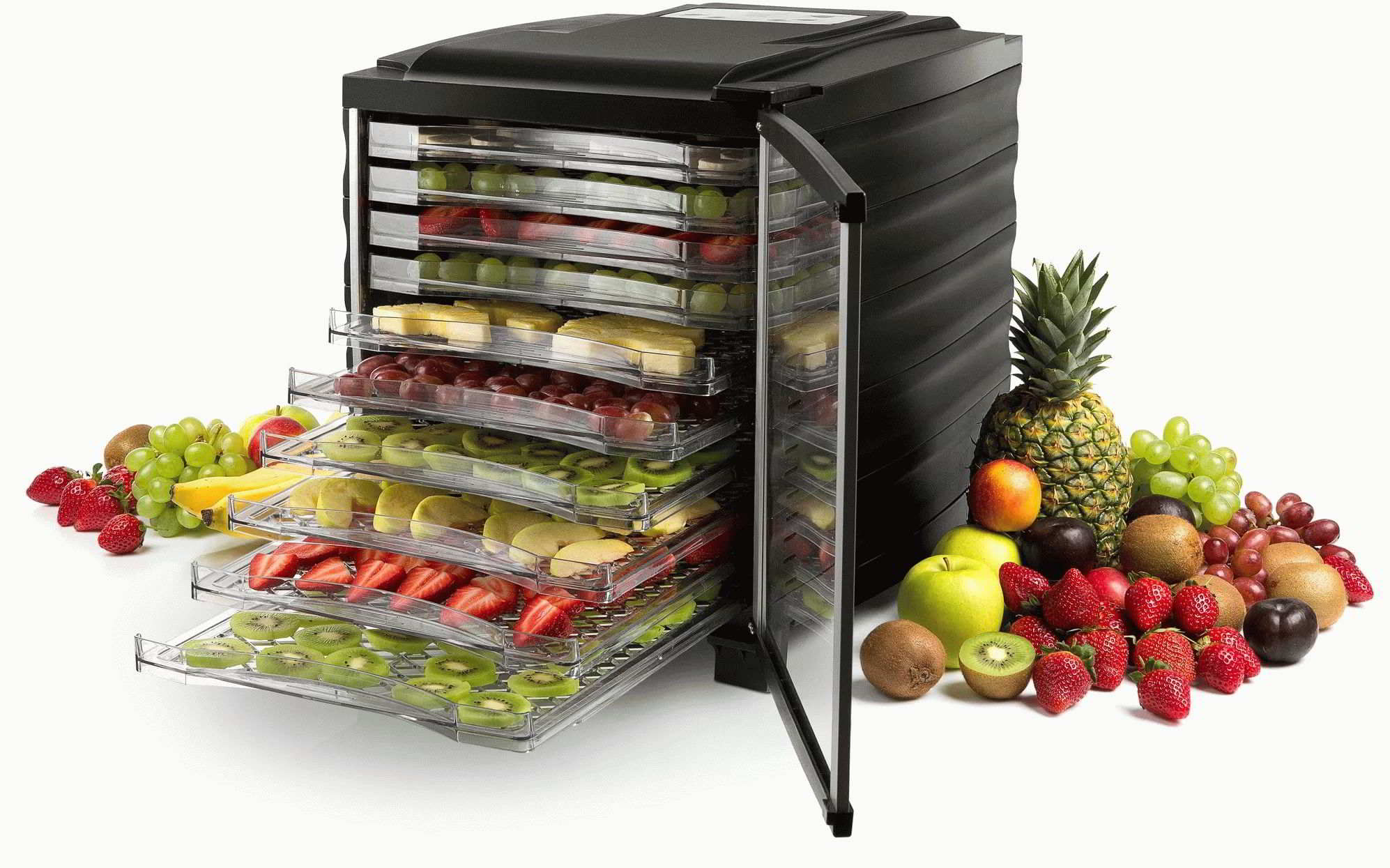Ranking of the best micrometers for 2020
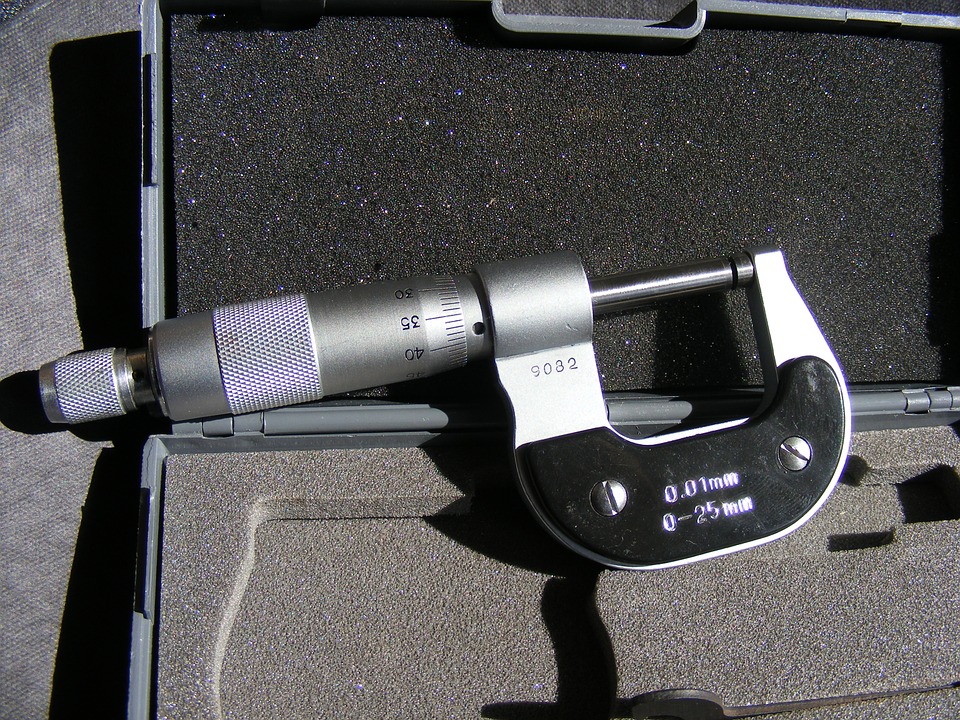
We are often faced in production with the need to make accurate measurements. Turners and jewelers alike can face this problem. Of course, you can use a vernier caliper, but a micrometer will give the minimum measurement error. And due to the low cost, every specialist can easily afford it.
What is a micrometer
The measurement of various quantities dates back to ancient times. This is evidenced by various architectural monuments, which would not have survived to this day without precise execution. Previously, measurements were carried out with primitive products, but progress does not stand still. Each product began to change and improve. This became the case with measuring instruments. After all, the more complex the product being manufactured, the more accurately you need to measure the details. And one of these meters was the micrometer. So in 1848 in France the first patent for a device was obtained, which was a screw caliper with an additional dial. The additional scale made it possible to obtain more accurate fractional measurements from the main scale. After that, the device began to improve in design, but the basic principle remained unchanged.

The design of the device is not complicated. It is based on a metal bracket with a heel and a screw mechanism. An object that needs to be measured is placed between them. By tightening the screw, its width will be displayed on the scale. First they look at the indicator of the stem scale, then at the drum scale. By adding these two values, you will get an accurate result.
The micrometer is used to measure materials that do not deform in compression.
Also, the design has a latch that will not let the scale go astray until the result is recorded.
How to use
Before using the micrometer for the first time, it must be set up. Also, this procedure may be needed during operation if the settings are lost. First you need to remove all dust and dirt from the device. After that, unscrew the screw with the drum. Now you need to rotate the screw until the jaws close. Tighten the screw with the ratchet until you hear a click. This is necessary to fix the measuring surface. Now you need to rotate the drum, its zero mark should coincide with the reference mark on the stem of the device. For an accurate match, look at a right angle from the side of the drum. Viewing from other angles will give a visual deviation from the reference. When the values match, grab the cylinder and tighten the nut.
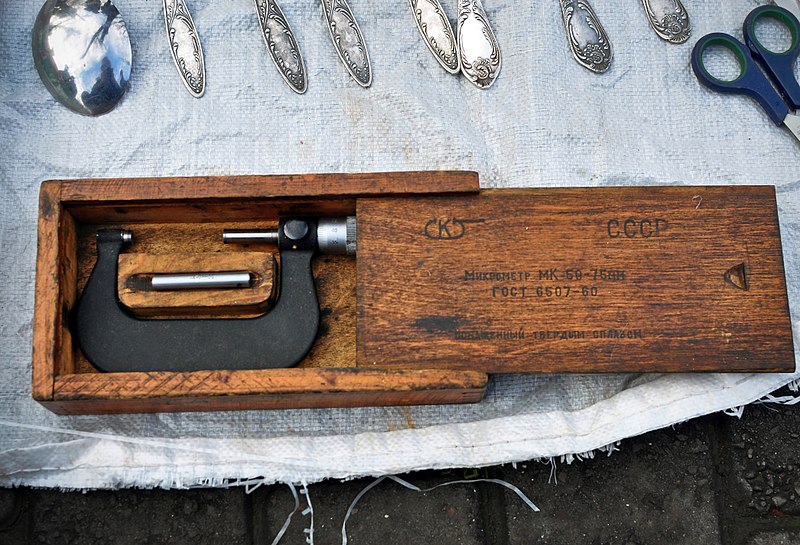
Now you can start measuring. First, unscrew the screw to the size of the part to be measured. Then the part is placed between the screw and the stop. Rotating the ratchet until it clicks, clamp the part. To get the result, the value of the drum scale is added to the horizontal scale. Usually, to obtain a result with a minimum error, several measurements are carried out, and their average result will be considered the final one.
Wipe down the device after each use. Dust or dirt particles can cause errors. Also, the device should not receive mechanical stress. This will create irregularities in the parts, which will also lead to errors. Store the micrometer separately from other instruments. When storing, it is better to wrap it in a soft cloth or thin foam rubber, and then put it in a separate box.
Types of micrometers
This product has found application in various fields. To adapt it to various conditions of use, some design features were introduced. Let's take a look at them. The most common instrument is a smooth micrometer. It is used for external measurement of parts. The division step on the horizontal scale is 0.5 mm, and on the drum 0.01 mm. There are also models where the division on the drum scale is 0.005, 0.002 or 0.001 mm. This version of the device is available with both mechanical and digital indication.
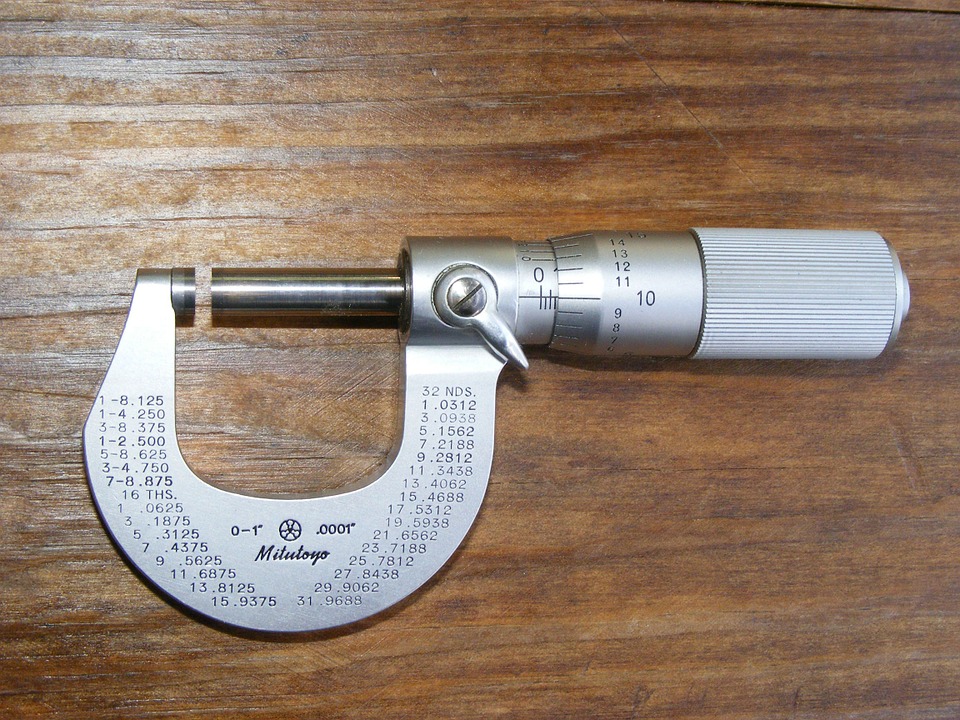
To measure the thickness of a sheet or tape, a sheet gauge is used. To increase the contact area, such devices have additional plates on the screw and heel. Since the metal sheets have irregularities, making measurements with a smooth micrometer will result in a large error. The presence of plates helps to avoid this.
A tube micrometer is used to measure the thickness of the pipes. They differ in appearance from other models. Here the staple is cut, and the heel replaces it. For measurement, the heel is placed inside the pipe and then clamped with a screw. This allows you to obtain accurate data on the pipe wall thickness.
A wire gauge is used to obtain wire thickness data. Among all types of micrometers, this option is the most compact. It lacks an arcuate bracket, and outwardly it may resemble a metal rod. Its main feature is a small travel range. But for its purpose, no other is needed.
There is also a device with a very thin screw and heel, it is called a micrometer with small jaws. It is used to measure the surface of a metal after drilling or grooving. Thanks to this design, it can easily fall into thin holes.
A device for hot rolled metal is used to measure the thickness of metal blanks in production. With its help, data is taken without waiting for the product to cool down. So in the shortest possible time, you can determine the readiness of the manufactured part.
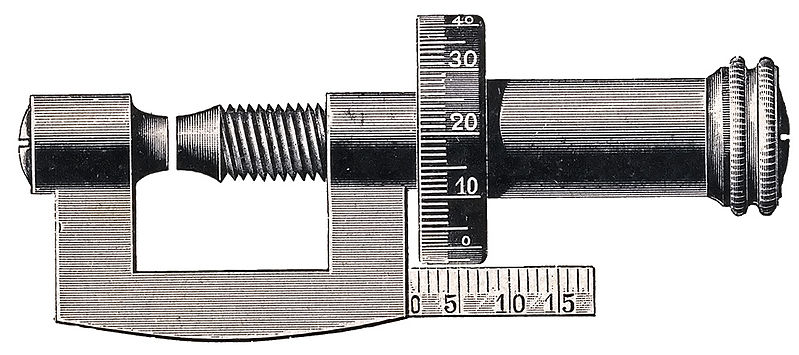
In addition, there is a universal device that has removable tips. Such a device is suitable for those who work with various parts and materials. By replacing one handpiece with another, the device can be easily adapted. Low-cost options for universal products may produce a small error. This is due to the formation of a gap with insufficient compression.
The most convenient is the digital version of micrometers, which has an electronic display. Taking data with such a device takes less time and has high accuracy. They require a battery to function. The durability of digital instruments may be lower than mechanical ones. Since such a device, if handled carelessly, will easily become unusable. For example, it is easy to damage the display here. Devices from an expensive price segment can have many additional features. For example, memory, measurement time. Such functionality will be useful when a large number of measurements should be taken in a short period of time.
How to choose a micrometer
Before purchasing this measuring device, you should familiarize yourself with its classification, and, based on the measurement purposes, determine the type of device you need. After that, you should pay attention to several criteria that you will need during operation.
First, you need to decide on the measurement range. This criterion will depend on the size of the items you will be working with. The most common are devices with a range of 0-25, 25-50, 50-75 and 75-100 mm.When working with various details, all 4 options may be needed, and for narrow specializations one type will be enough. For example, jewelers do not need a large range of instruments because the work is done with fine details. And some industries require accurate measurements of large parts. For such cases, there are devices where the maximum range reaches 600 mm.
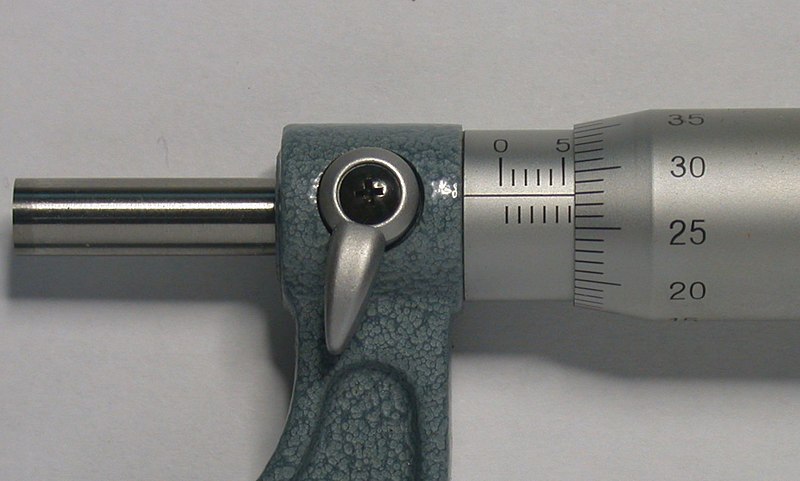
The accuracy of the result will depend on the measurement step. This parameter depends on the scale of divisions. This means that the smaller the step value, the more accurate the final result will be. Also, each device has its own error. This value can be seen in the product passport.
And for convenient use, you should pay attention to the ergonomic design, dimensions and weight. The weight of micrometers can be up to 2 kilograms. With long-term use, this can be inconvenient. To appreciate the ergonomics of the device, it should be held in your hand. The grip should be done with the left hand, and the right one should calmly reach the adjustable elements. Also, the places where the device is gripped should not slip in the hand and it is desirable to have a relief surface.
It will also be a positive thing if the device is equipped with a case. It will be convenient for transportation and storage.
Best micrometers
Matrix 317255
This mechanical micrometer is from the German company "Matrix". It is made of high quality tool steel. The tool is made in the form of a bracket. In addition, the bracket is covered with enamel. This design will protect the tool from corrosion, rust and mechanical stress. The tool has insulating pads. This makes the operation convenient and practical. The micrometer head is the main working element of this model. The screw and heel of the product have a carbide surface. This prevents abrasion and makes the appliance durable and durable. "Matrix 317255" is suitable for both home use and repairmen, jewelers or car mechanics.
The measuring range of "Matrix 317255" is from 0 to 25 mm. The price of one division is 0.01 mm. and its error does not exceed 0.004 mm. The size of "Matrix 317255" is 15.1 * 7.5 * 3 cm, and its weight is 280 grams.
The average cost is 800 rubles.
- Compact size;
- Light weight;
- The heel and screw will not wear off with frequent use;
- Pads for easy operation;
- Price.
- Not.
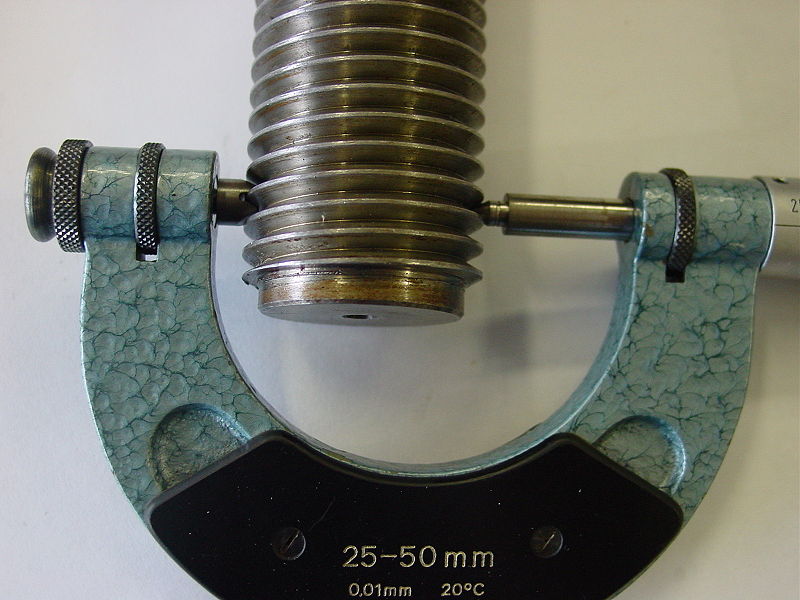
ZUBR Expert 34480-50_z01
This model is a smooth mechanical micrometer. It is suitable for control and linear measurements of parts, finished products and assemblies. The form "BISON Expert 34480-50_z01" is made in the form of a staple, which has a heel on one side, and a stem on the other. The inner part of the stem has a thread, along which a screw moves. The heel and propeller diameter is 6.5mm. Also, these parts of the device are covered with a carbide plate, which reduces their wear, but the accuracy remains unchanged. For convenient operation of the device, the manufacturer has provided thermal protective pads, this will prevent the tool from sliding in the hand. The product should be used in the temperature range from +10 to +30 degrees. If the product has been transported in an unacceptable temperature range, then wait 4 hours before use. Otherwise, an error of a more permissible norm is possible.
The measurement range "BISON Expert 34480-50_z01" is from 25 to 50 mm. One device step is 0.01 mm. The measurement error is 0.004 mm. The size of "BISON Expert 34480-50_z01" is 16.5 * 6.7 * 1.85 cm, and its weight is 300 grams.
The average cost is 1200 rubles.
- Complies with GOST 6507-90;
- Ergonomic design
- The working parts are covered with a carbide plate.
- Not suitable for use at temperatures below +10 degrees.
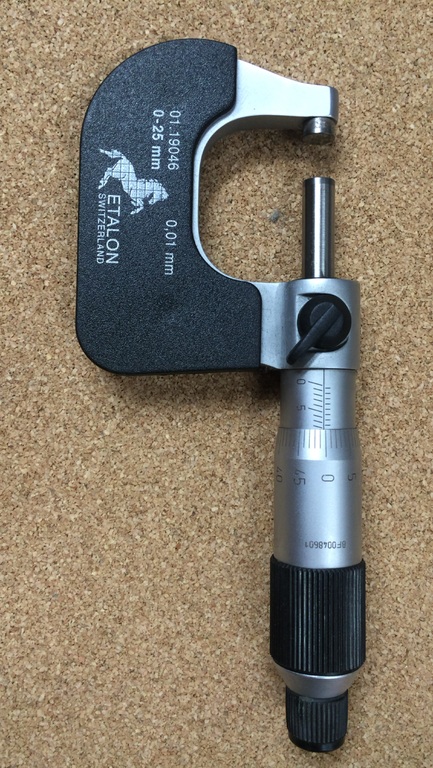
Megeon 80800
Megeon 80800 is a digital micrometer that will become an excellent assistant in making control measurements of the manufactured product.The device has a liquid crystal display, where the measurement results will be visible. The surfaces involved in the measurement process are hard-alloyed. Which will extend the life of the device. The micrometer head, which serves as a reading device, has a graduation value of 0.1 mm. the staples of the product have a heat-insulating coating, and in addition there are heat-insulating linings. The device has an electronic unit that can take readings both in inches and in the SI system. It is possible to transfer data to a computer or controller of the process control system. For correct operation of the device, the temperature should be in the range from +5 to +35 degrees, and the air humidity should not exceed 80%. Also, there should be no aggressive vapors or gases in the air.
The measured range is 0-25mm, and the error does not exceed 0.002mm. the size of "Megeon 80800" is 18 * 9 * 4 cm, and the weight is 310 grams.
The average cost is 4000 rubles.
- High accuracy;
- The ability to take readings in several measurement systems;
- The ability to transfer data to a computer.
- Not.
Inforce 06-11-44
With the help of "Inforce 06-11-44" it will be possible to make accurate measurements when assembling mechanisms or during equipment adjustment, as well as to take the exact size of parts. The device has a compact size, digital display and intuitive operation. The jaws of the device have a flat surface, and when closed, they ideally adhere to the part to be measured, which minimizes the error. There is no point in worrying about the accuracy of the device; at the factory, experts check it for three calibrations. And the possible error does not exceed 0.003 mm. The price of one division is 0.001 mm, and thanks to the smooth movement of the head, the result obtained will be highly accurate. The result will be displayed on the device. You can also select a system of units of measurement.
The device uses a lithium battery. If Inforce 06-11-44 is not used for more than 5 minutes, the device will automatically turn off. When the battery needs replacing, the display will be dim or blinking. After changing the battery, all settings will be saved.
The measuring range is from 0 to 25 mm. the device works properly at temperatures from 0 to +60 degrees. The size of Inforce 06-11-44 is 19.5 * 12 * 5.2 cm, and its weight is 490 grams.
The average cost is 5,000 rubles.
- High accuracy of the results obtained;
- Made from durable materials;
- Works in a wide temperature range;
- Possibility to select the unit of the measurement system.
- Calibration plates missing.
Micron MIC 414780
This micrometer model is from the Czech manufacturer "Micron". For convenient use, the manufacturer has provided 5 rubberized buttons. With their help, you can switch units of measurement, set absolute zero, as well as save the results. The steel arch of the device has an enamel coating that gives additional protection to the metal. There is also a rubberized pad, which makes operation convenient and allows the device to slip out of hands. It is also worth noting that the Micron MIC 414780 is protected from dust and moisture, which significantly extends its service life.
The measuring range of the device is from 0 to 25 mm, the measuring step is 0.001 mm. the size of "Micron MIC 414780" is 19.5 * 10.5 * 4.5 cm, and the weight is 410 grams.
The average cost is 10,000 rubles.
- High accuracy;
- Easy control;
- The ability to save data;
- Dust and moisture resistant.
- High price.
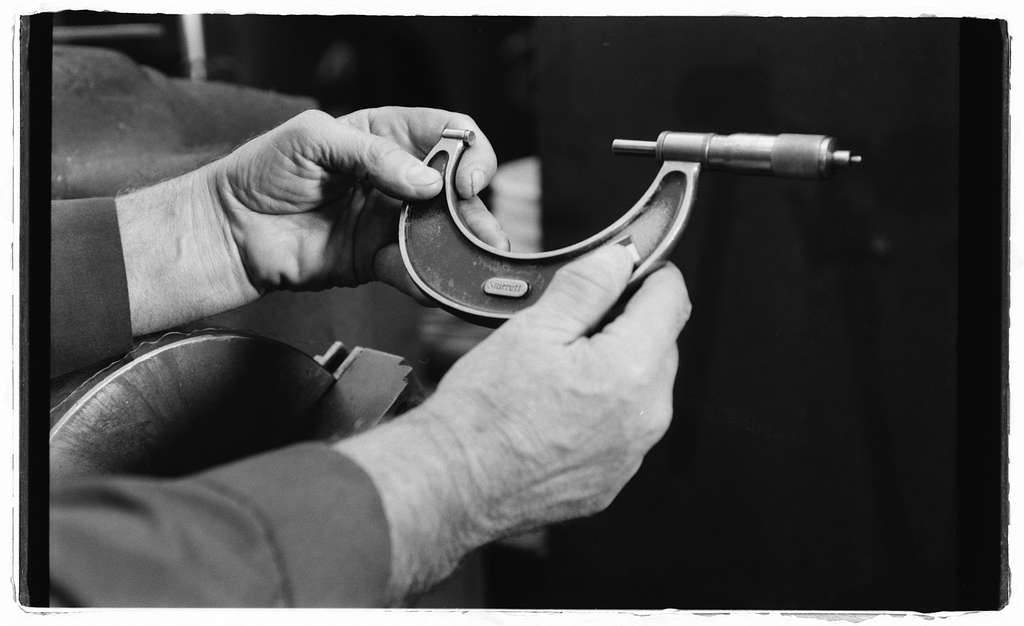
The micrometer will be an indispensable device for taking accurate measurements. For home use, a mechanical version of the device is suitable, and for production it is better to purchase an electronic micrometer. Although the cost of a digital micrometer is higher than a mechanical one. But the results will be accurate and the data collection time will be reduced. By purchasing a product from a trusted manufacturer, you will receive a device that will last more than one year.
new entries
Categories
Useful
Popular articles
-

Top rating of the best and inexpensive scooters up to 50 cubic meters in 2020
Views: 97661 -

Rating of the best materials for noise insulation for an apartment in 2020
Views: 95022 -

Rating of cheap analogues of expensive drugs for flu and colds for 2020
Views: 91751 -

The best men's running shoes in 2020
Views: 87681 -

Top ranking of the best smartwatches 2020 - price-quality
Views: 85091 -

Best Complex Vitamins in 2020
Views: 84801 -

The best dye for gray hair - 2020 top ranking
Views: 82406 -

Rating of the best wood paints for interior use in 2020
Views: 77202 -

Ranking of the best action cameras from China in 2020
Views: 75269 -

Rating of the best spinning reels in 2020
Views: 74827 -

The most effective calcium supplements for adults and children in 2020
Views: 72463 -

Top rating of the best means for male potency in 2020 with a description
Views: 68296
